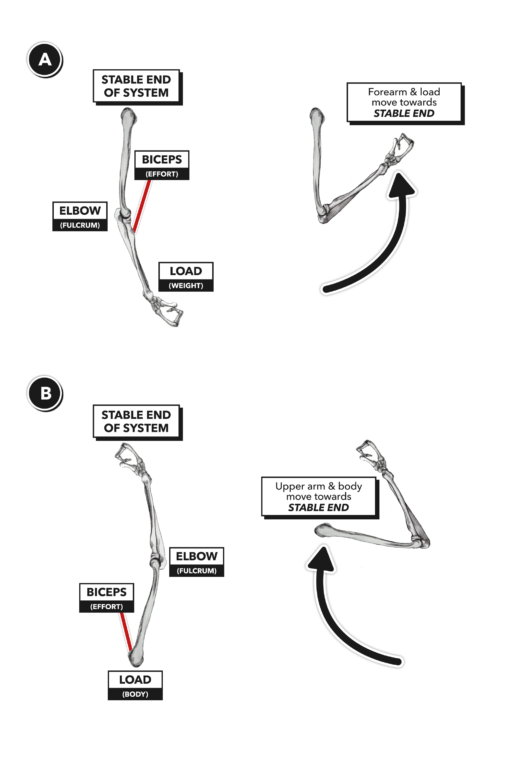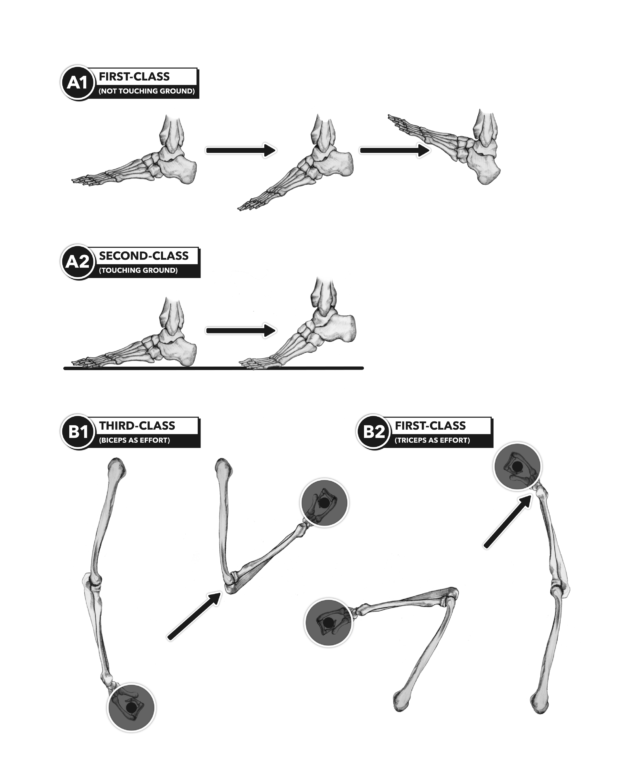The type of lever used in human movement often depends on the circumstances of the movement being executed. Small changes in the context of a movement, such as which part of the lever system is the most stable or which muscle is moving it, can change the lever type used in the movement.
In the example of the ankle, movement of the toes and heel is accomplished via a first-class lever (fulcrum between load and effort) if the foot is suspended (Figure 1, A1). However, if we are standing with our feet on the ground, the elevation of the heel is accomplished with a second-class lever (load between fulcrum and effort) (Figure 1, A2).
When we consider the elbow, the active musculature alters both the movement and the lever type in play. If we flex the elbow, moving the hand upwards against resistance, a third-class lever is working as effort from the biceps is applied between the fulcrum and load (Figure 1, B1). If we extend the elbow, moving the hand upwards against resistance, the active lever is a first-class lever because the fulcrum is between the effort from the triceps and the load (Figure 1, B2).
Note that in exercises like the curl and triceps extension, the lever type does not change with the direction of movement within the individual exercise. In the curl, for example, the biceps raises or lowers the load using a third-class lever. When the muscle contracts with more force than its load, flexing the elbow, the load is raised via a third-class lever moving in a positive direction. When a loaded biceps generates less force than its load, the load is lowered toward extension via a third-class lever moving in a negative direction.

Figure 2
